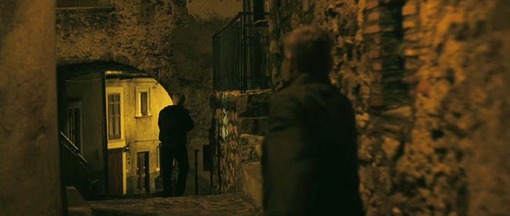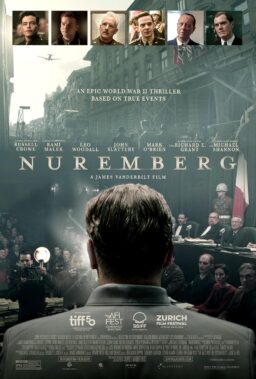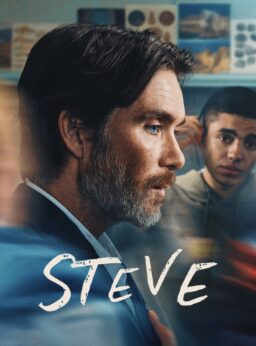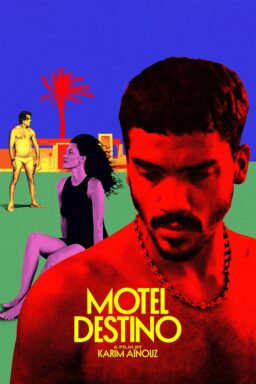Above and behind. That is the dominant position for watching, for following, for shooting, for f***ing, in Anton Corbijn’s “The American.” Corbijn, the Dutch photographer and director best known for his music videos (U2, Nirvana, Depeche Mode) and his Joy Division biopic “Control,” places his camera high in the sky, looking straight down at the landscape that resembles an intricate maze or a mosaic; or behind the central character Jack (George Clooney) as he walks through the crooked cobblestone streets of the medieval mountain village of Castel del Monte in the Abruzzo region of Italy; or in front of him, positioned so that we can glimpse behind him what he senses but can’t see: that he’s being observed…

“The American” (with a few last-act lapses) locks us into the justifiably paranoid state of mind of Jack (who’s also known as Edward, Signore Farfalle and plain old Mr. Butterfly), a man on a mysterious and deadly mission. We don’t know what the mission is, we just watch him wait, and watch him watch, and watch him go through the process of whatever it is he’s doing. The obvious comparison is to Jean-Pierre Melville’s “Le Samourai,” in which Alain Delon plays an ascetic hit man. But I would consider “The American” a virtual remake of Jim Jarmusch’s “The Limits of Control,” starring a major international movie star instead of Isaach De Bankolé. Both mine the aesthetics of 1960s and 1970s European art films (notably Melville, Antonioni, Bertolucci) — and it’s no wonder that the mainstream American audiences who made it the top-grossing picture of the weekend (I saw it at a jam-packed Labor Day matinee) hated it.


A brief digression:
I thought it was just my audience, but I happened upon a news release saying that CinemaScore, the market research firm, reported the average grade “The American” received from ticket buyers was a D-, which turns out to be some kind of record. This made me laugh, because I had made a point of listening to what people were saying as they left the theater, and jotted down a few of the things I overheard — most of which were fairly predictable:
“Well, that wasn’t very good. Why is it getting such good reviews?”
“It doesn’t answer your questions, does it?”
“Nah, too slow.”
“I know! I’ll never trust him again!” (I don’t know who that remark was referring to — a critic or a personal acquaintance of the patrons?)
There’s a little explosion of action near the beginning which utterly bewildered the three obnoxious early-teens who had snuck into the R-rated picture (for sex and nudity) to text and chatter with one another. They quieted down after being warned by those sitting nearby, and at some point they bolted, probably out of boredom. They were sitting right in front of me and I didn’t even see them leave. I guess I was engrossed in the movie by that point…

Like the Spain of “The Limits of Control” — or the Paris of “Le Samourai” or the Bruges of “In Bruges” — the Italy of “The American” is an Old World of breathtaking beauty. It’s a place out of time, where assassins and gangsters and sleeper agents go to get away — and to meet their destinies. “Limits of Control” involves more characters and more locales, but the narrative tension is quite similar: What is this man doing, why, and for whom? Instead of a series of encounters with colorful, enigmatic, eccentric contacts, “The American” (which is much more somber in tone than Jarmusch’s comedic film) features rendezvous with a mysterious femme fatale whose hair color changes each time Jack meets up with her.

But back to the movie itself. For composition freaks like me, “The American” is a joy to watch. Corbijn and cinematographer Martin Ruhe like to put just a fraction of something in a corner — a road, a person with his head out of frame — to suggest how much we’re not seeing. Almost every shot plays up a tension between foreground and background, right and left.

Above: This is a composition, repeated in several shots, that mesmerized me. There’s a little spurt of water burbling in the middle distance, between the back tire of the car and the window behind Clooney, and, between the black bar on the left and whatever that is to the right. It’s just on the right edge, almost invisible, but the movement keeps teasing at your eye, calling your attention to what’s happening out the window…


(Possible spoilers ahead.) In one scene a bar owner admires a memorable slaughter scene featuring Henry Fonda in Sergio Leone’s “One Upon a Time in the West.” Much later, in a Leone-like arena-space, Jack appears ready to face-off with his (possible) nemesis, only to be disrupted by the arrival of a busload of kids. The shoot-out that doesn’t happen thickens the sense of tension and frustration — like the moment at the picnic spot by the river in which none of the expected scenarios (neither picnic, skinny-dipping, love-making, nor assassination) comes to fruition. Jack is being blocked and aggravaged at every turn…
“The American” bristles with visual excitement in every frame. Slow? How can it be, when every frame is so full?

P.S. Thanks to Dennis Cozzalio for this. Another very good reason parts of the movie reminded me of the Sicilian section of “The Godfather“!











